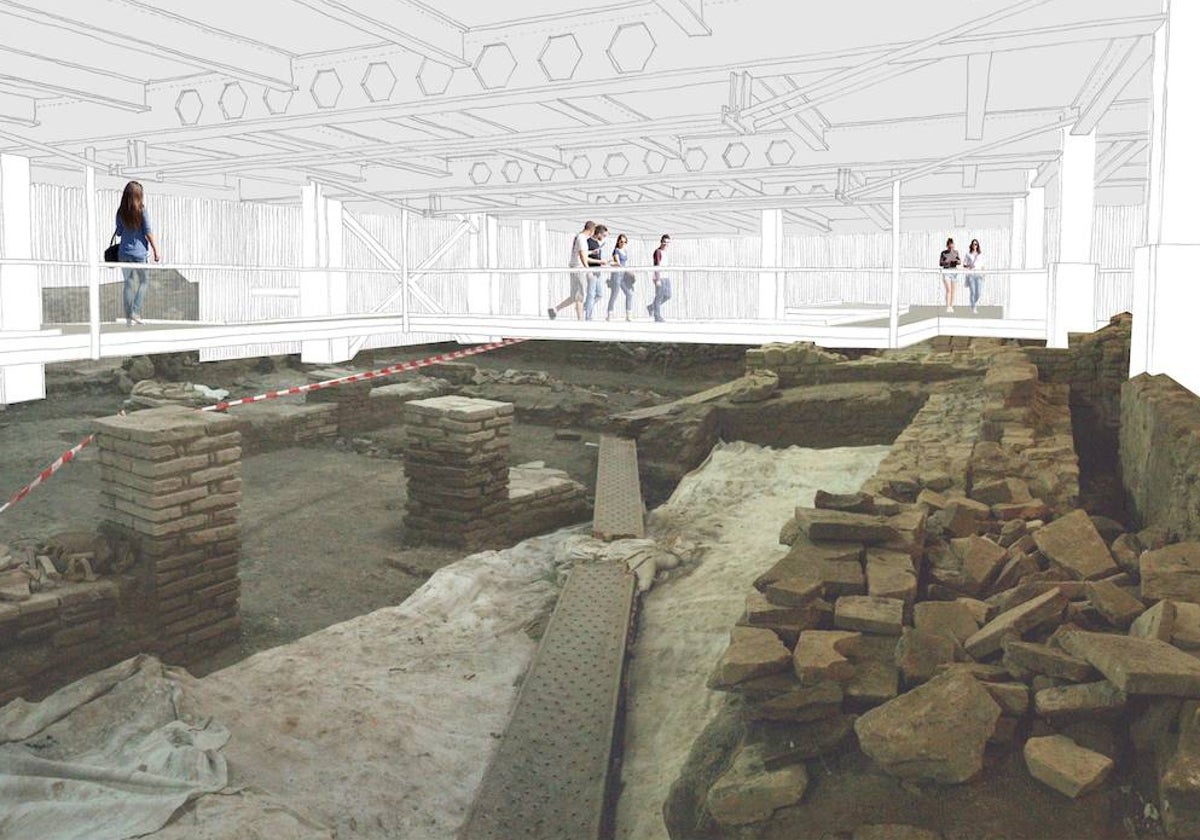Opening of Roman villa visitor project delayed at Museo Carmen Thyssen in Malaga
A new viewing platform and a change to the 'floating' walkway above the archaeological remains in the basement of the art gallery have meant that it will take a further three months to complete
There is a new delay in the project to open the archaeological remains of a Roman villa in the basement of Malaga city's Museo Carmen Thyssen to visitors. After years of delay and contract going out to tender twice, this time the extension of the deadline will be reduced to three months, which will, however, take the project into 2025 with the introduction of several improvements which were originally scheduled to be completed this December.
Among the new aspects of the project is the extension of the 'floating' walkway over the remains of the Roman villa with a viewpoint that will allow a closer look at the first century monumental fountain, a nymphaeum which was located in the inner courtyard of the villa, decorated with goldfish that are the oldest wall paintings preserved in Malaga. The addendum to the signed contract represents an increase of 80,832 euros (Spain's IVA sales tax included) in the budget, bringing the final figure for the project to half a million euros.
According to municipal sources consulted by SUR, the progress of the work which is being carried out by Hermanos Campano, has included variations to the original project to ensure the preservation of the archaeological remains, which include an area used for the production of salted fish, as well as a domestic and residential area.
The modifications also include a system that prevents the flooding of this underground space. All these alterations to the original project have led to an increase in the cost of the work to the final figure of 500,386 euros (IVA included), with an extended deadline of three months, meaning it is expected to be completed by March 2025, if there are no new unforeseen circumstances.
Another room in the museum
The purpose of these floating walkways over the Roman villa and factory in the basement of the Thyssen Museum will allow visitors to travel back two millennia and contemplate these remains dating from between the first and fifth centuries. The complex was in use until the beginning of the third century, while the villa remained in use until the middle of the fourth century.
This site was discovered during the remodelling of the Palacio de Villalón as the Carmen Thyssen Museum in 2009, when it was decided to integrate the remains into the art gallery itself, and which is now in its final stage. After a decade and a half of processing and delays, the tender for the project drawn up by the architect Rafael Pozo was launched in 2022, but was abandoned as inflation in the construction sector skyrocketed as a result of the war in Ukraine.
The lack of interest from construction companies in bidding with an outdated budget meant that the investment had to be increased by 100,000 euros in order to re-launch the public tender in 2023. This time there was only one company interested, Malaga-based Hermanos Campano, which was finally awarded the contract with a final budget of 419,553 euros (IVA included). This final price has now been increased by 80,832 euros due to changes in the contract for the architectural adaptation of the basement.

